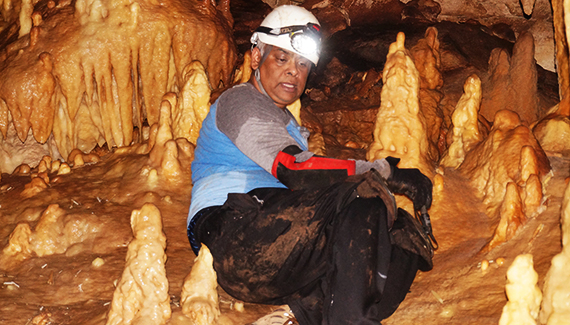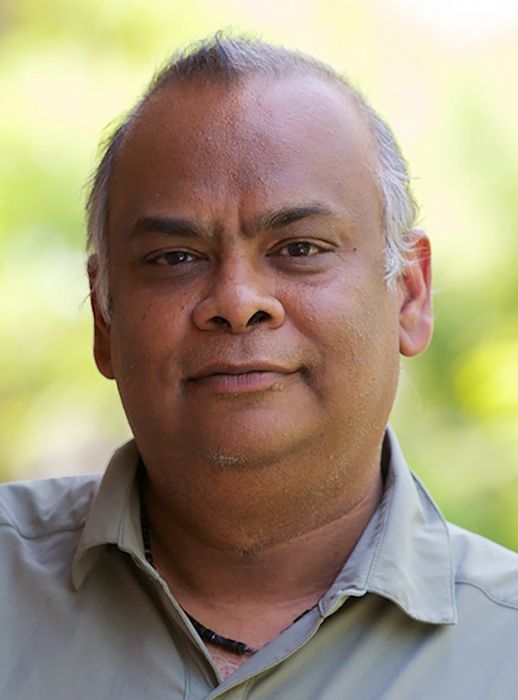
Professor Ashish Sinha and a team of international researchers used their analysis of stalagmites recovered from a cave deep in central China to not only map over 640,000 years of history of the Asian Monsoon–the longest and most accurate record to date–but also change the understanding of how ice ages terminate.
…examining stalagmites with radio metric dating, we are able to link ice ages and the monsoons with our record. Now that’s exciting.”

Sinha, chair of the Department of Earth Science and Geography at California State University, Dominguez Hills (CSUDH), and his team published a paper in the journal Nature detailing their data from Sanbao Cave, where stalagmites provide monsoon data dating back to the last seven ice ages, and that how every fourth or fifth completion of the Earth’s precession, or wobble, ends them.
“When we looked at our data, we discovered a perceptible link between periods of drastically reduced monsoon in Asia and the ice age terminations. So we can now accurately link the two systems with our record,” said Sinha, who stated that the recurring cycle of ice age growth and terminations has lasted for at least last 1 million years.
Cool Science Stuff
In the early 1920s, Serbian geophysicist and astronomer Milutin Milanković theorized that the waxing and waning of ice ages were the result of the changes in Earth’s orbital parameters such as eccentricity, i.e., changes to the “shape” of its orbit around the sun, which happens approximately every 100,000 years and seemed to coincide with the termination–or collapse–of ice sheets worldwide.
However, there are two other causes for the Earth’s orbital changes, explains Sinha. Along with eccentricity, there are changes in the Earth’s precession, which happens about every 23,000 years, as well as changes in the planet’s tilt with a period of 40,000 years.
“It turns out, when you look at these three cycles, the smallest change [in solar radiation over the Northern Hemisphere] is due to the changes in the shape of the Earth’s orbit. When you crunch the numbers with climate models, it does not show a drastic effect or change in terms of the reoccurrence of ice ages,” according to Sinha. “The biggest changes to both Asian Monsoon failures and ice sheer dynamics come from precession cycles, and we found the ice sheets break down after every fourth or fifth precession cycle [between 92,000 and 115,000 years], at least over the last 640,000 years.”
A potential reason the ice sheets break down after nearly 100,000 years of growth is that they grow too large and become unstable to resist the energy released from another precession, according to Sinha.
“The planet’s precessions resulting in the end of ice ages is not a new idea, but we can now confirm it with our data. The problem with ice core records is you cannot date them very well after a certain length of time,” said Sinha. “But by examining stalagmites with radio metric dating, we are able to link ice ages and the monsoons with our record. Now that’s exciting.”